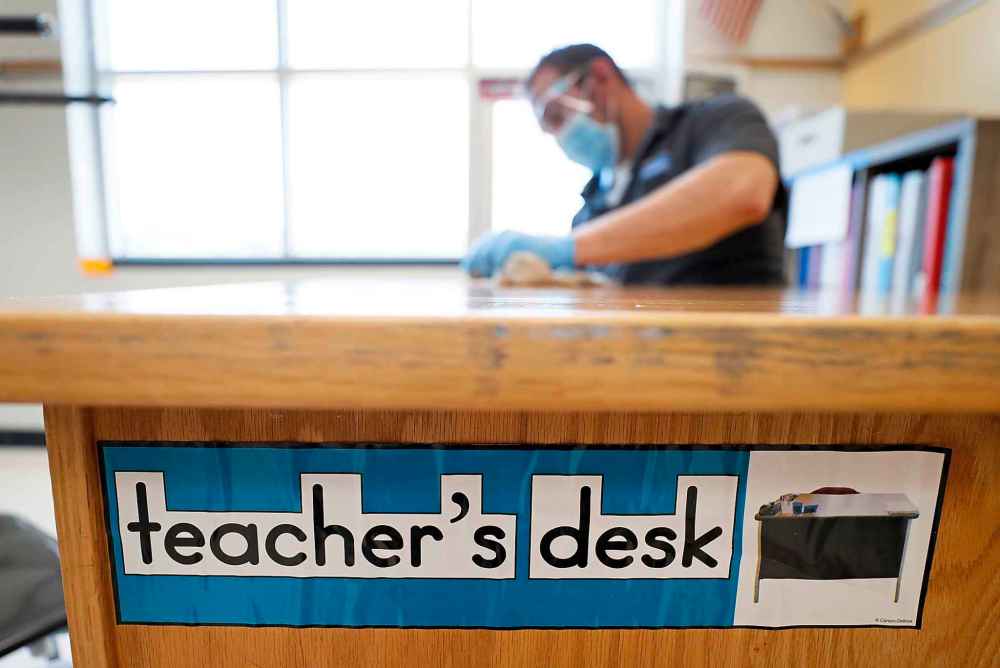A summary of the Public Health Agency of Canada’s back-to-school recommendations
Advertisement
Read this article for free:
or
Already have an account? Log in here »
To continue reading, please subscribe:
Monthly Digital Subscription
$0 for the first 4 weeks*
- Enjoy unlimited reading on winnipegfreepress.com
- Read the E-Edition, our digital replica newspaper
- Access News Break, our award-winning app
- Play interactive puzzles
*No charge for 4 weeks then price increases to the regular rate of $19.00 plus GST every four weeks. Offer available to new and qualified returning subscribers only. Cancel any time.
Monthly Digital Subscription
$4.75/week*
- Enjoy unlimited reading on winnipegfreepress.com
- Read the E-Edition, our digital replica newspaper
- Access News Break, our award-winning app
- Play interactive puzzles
*Billed as $19 plus GST every four weeks. Cancel any time.
To continue reading, please subscribe:
Add Free Press access to your Brandon Sun subscription for only an additional
$1 for the first 4 weeks*
*Your next subscription payment will increase by $1.00 and you will be charged $16.99 plus GST for four weeks. After four weeks, your payment will increase to $23.99 plus GST every four weeks.
Read unlimited articles for free today:
or
Already have an account? Log in here »
Hey there, time traveller!
This article was published 07/08/2020 (1953 days ago), so information in it may no longer be current.
The Public Health Agency of Canada has issued a list of general recommendations for reopening schools in September while reducing the risk of spreading COVID-19.
Some highlights:
Keep those who have symptoms of COVID-19 or who have been exposed to the virus out of schools

PHAC recommends prohibiting children, staff and volunteers who may have COVID-19 from entering school buildings. It suggests teaching kids how to recognize symptoms. The agency also discourages schools from practices such as awards for perfect attendance.
Make sure everyone does their part
The agency suggests schools keep children, staff, volunteers and families informed about current public health advice. It says they should encourage frequent hand washing, “respiratory etiquette” and avoiding touching the face. It says schools should have tools in place to encourage hand hygiene, such as highly visible hand sanitizer stations at entrances and exits.
Younger kids, meanwhile, should be reminded not to touch their classmates or put toys in their mouths. The agency also recommends increasing the number of staff for a better staff-to-student ratio, as possible.
PHAC also suggests that everyone over the age of 10 wears non-medical masks.
Promote physical distancing
While PHAC notes that physical distancing isn’t always practical in “child and youth settings,” it recommends promoting the practice as much as possible.
It says when and where possible, there should be a two-metre distance between people — even those in the same “cohort” or class. This may not be possible with younger children, the agency says, so schools should maintain two metres of distance between groups of cohorted children.
The agency also recommends postponing assemblies, team sports, field trips or extracurricular activities where physical distancing cannot be maintained.
Set up physical barriers
The agency says that if possible, schools should put up physical barriers between groups of children, staff and volunteers, such as Plexiglas windows or cubicles higher than head-height.
High-risk people: think about staying home
The agency says students, staff and volunteers who are at a high risk of disease should talk to their doctor about staying home. To enable this, schools should provide alternative lessons so students don’t fall behind in their studies.
And those who live with a family member who’s at high risk should also talk to a medical professional about whether they should go to classes in person.
Limit interactions with others
The public health agency says schools should consider reducing the number of students using the same space at the same time. It says schools should take into account the size of the space, the number of individuals and their ability to keep a physical distance.
It also suggests dividing classes and groups into smaller numbers, and keeping students with the same cohort of peers and staff every day.
PHAC recommends staggering schedules and break times to limit the number of kids in attendance at one time.
Get to school safely
The public health agency says schools should encourage alternative modes of transportation like walking or being dropped off by a parent or guardian, rather than taking a school bus.
It says the number of people on a school bus at one time should be minimized, and wherever possible kids should be kept two metres apart on buses.
This report by The Canadian Press was first published Aug. 7, 2020.




